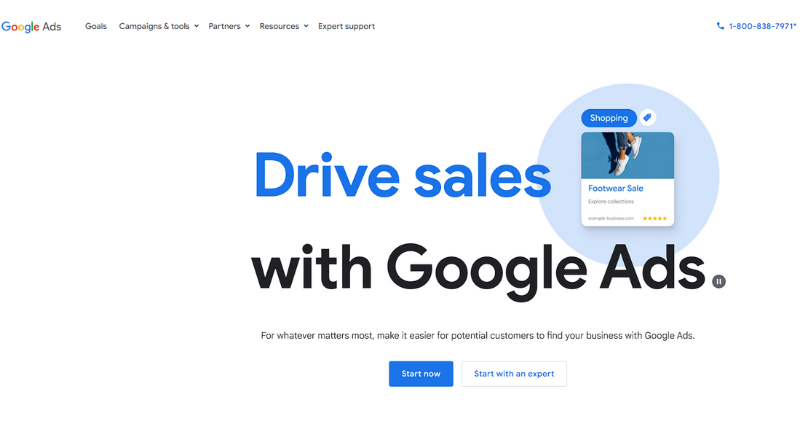
Do you want to be your own boss? Follow an entrepreneurial dream? Express your talent and interests by producing a product?
Thanks to the Internet, those are all attainable goals. Today, more than at any other time, people can start their own successful eCommerce businesses.
But, just because you can start an online business doesn’t mean it will be easy. Keep reading to learn why.
Start Your Successful eCommerce Business
ECommerce is an exciting idea for people who have a product or service they want to sell. But where to start?
If you search the Internet, you’ll find plenty of advice and information on starting a successful eCommerce business.
It’s easy to get lost, confused, or distracted by all the choices for websites, software, suppliers, and delivery systems.
Or, you could get bogged down in details.
Many potential entrepreneurs never get started because they’re convinced they need a perfect website, logo, marketing plan, etc.
But if your perfect website doesn’t create any sales, it’s useless. And if you wait until it’s perfect, well, you may never launch your business.
My advice is to start with the bottom line. Push pause on everything except sales. Focus on generating revenue.
You can think about everything else after you sell something.
Let’s get started!
Start with Practical Steps
Put away the shiny website designs and focus on the practical steps that will create a foundation for a successful eCommerce business.
Begin with a simple website on a reputable platform (like Shopify, BigCommerce, LemonStand) to sell your products.
There are hundreds of platforms to choose from, so take some time to visit their websites and see what they offer.
Prices and features vary. Many platforms offer a free trial.
You want to launch as soon as possible. Don’t wait until the website, logo, or anything else is perfect.
The goal is to get your product to potential customers to learn what does and doesn’t sell.
After you have feedback based on clients and sales, then you can perfect your process and glam up your website.
Remember, a perfect website with no sales is not a perfect website. Don’t get hung up on minor details. Start selling!
What Product Will You Launch?
You need to know if there’s a market for your product or service before you try to sell it.
Make a list of potential products. Think about what people you know like and buy. Spend time on social sites to see what is popular.
You can find inspiration anywhere and everywhere. When you use the Internet, ideas are literally at your fingertips.
Research Potential Products
Once you pick a product or service, it’s time to research its place in the market before making a final decision.
Here are 7 ways to research your idea:
1. Google Your Product
A quick Google search will show you who your competition is.
If someone else is advertising on Google, that means there are potential customers.
It’s a good indication you could build a successful eCommerce business with your idea.
If you do a search and find few or no customers, pick another product.
2. Check Google Trends

Google Trends shows you the most popular search topics.
You can enter your product to see if it’s trending up or down or stays the same.
You’ll see what questions people ask about it, where they live, and related topic searches.
It’s valuable information you can use to help potential customers and generate sales.
3. Try Google Keyword Planner

This tool helps you see what your competition is doing.
Type your product or keywords into Google Keyword Planner to see what advertisers are willing to pay to get clicks from customers who are actively searching for the product.
Keyword Planner can also give you ideas for related keywords and phrases.
4. Survey eBay Listings
Is your product idea one of eBay’s top sellers?
Look at listings to see if your product is popular. Are there multiple active listings or auctions?
If so, that’s a sign that the product is in demand and has real potential as a successful eCommerce business.
Does your market have different segments? For example, cars are separated into categories like economy, mid-size and luxury.
Are there different levels or niches where you can choose to compete? Does one segment show up more than others?
5. Read Amazon Reviews
You can learn a lot about your target customers on Amazon. How?
Read the reviews. Read what customers write in their reviews about products similar to yours.
You’ll discover what people love and hate about the product features, quality, delivery, and customer service.
Use the information you glean from Amazon to build your brand.
You’ll find out what does and doesn’t work for your competitors without a steep learning curve or expensive first-hand lessons.
6. Spy on Your Competition
SpyFu is a paid service that gives you a deep understanding of your competition.
It tells you which sites rank best in search results and which brands are currently advertising.
Plus, it shows you the top-performing keywords and ads.
You can use this information to plan your own search engine optimization and advertising strategy when you’re ready.
SpyFu updates monthly, so it’s not a real-time tracker, but it offers valuable insights into larger trends.
7. Search AHREFS

This is another powerful tool for research. It’s a paid service that identifies top keywords.
Even better, it shows how much traffic each keyword produces.
It provides solid information on which websites your competitors link to and which sites link back to them.
Do they get lots of traffic from Facebook, Instagram, Pinterest or Twitter?
Once you know the answer, you’ll know where to find potential customers.
When you’re ready to advertise, start there. You’ll save money by not buying ads in the wrong space.
How to Source Products
The answer to how you source your products will depend on the product.
If you create your own jewelry, you’ll probably make it and warehouse it yourself.
But what if you want to sell an oversized product made by a large manufacturer?
What if your product is made overseas? If so, you’ll want to consider drop shipping.
The drop shipping method means you buy products from a wholesaler who will ship directly to your customer.
Instead of buying a huge inventory and having to store it, you partner with the supplier to sell their merchandise.
You’re essentially the middleman.
Interview multiple manufacturers. Make sure the manufacturer can meet your product specifications and supply demands.
This is especially important if you use an overseas production company.
You need to communicate clearly and cover every conceivable detail before you commit to a partnership.
After you have a product and supplier and know your product will sell, it’s time to optimize your marketing plan.
Refocus on Marketing
Once you make some money, you should funnel it back into the business with a focus on marketing.
At this point, your sales have reached the place where you earn more than you spend.
(For example, you consistently spend $100 on advertising, but your sales are $105.)
Now it’s time to optimize your store design, create a slick brand image, and find ways to make more money.
Facebook and AdWords gave you the chance to advertise directly to your target audience and gain immediate sales.
Investigate ways to hone your Facebook ad campaigns for optimal reach.
Consider advertising on other social media channels like Twitter, Pinterest, Instagram, and SnapChat.
All these platforms have advertising options.
After you optimize your marketing, you can look at other aspects of building a solid, successful eCommerce business.
Customer Service
Did you know that 45% of online customers abandon their online transactions if they have unanswered questions or concerns?
In our immediate economy, you have to answer quickly, or they will leave without making a purchase.
One way to do this is to create content that answers questions. It can be a FAQ page or an online chat feature.
You want to find ways to build trust with your customers before, during, and after the buying journey.
It’s always cheaper to create repeat customers than to acquire new ones.
Convert Visitors to Customers
If you focus on creating a better customer journey, you can capture some of the lost sales from cart abandonment.
Limited-time sales or promo codes can create a sense of urgency.
Start an email campaign to address the reasons people leave without buying.
Or, use a retargeting campaign to track visitors and display your ads to them as they visit other sites online.
Optimize Your Store
Everyone talks about bad experiences. If your customers aren’t happy, they will tell their friends, family, and coworkers.
Here are a few ways to make sure your visitors are happy:
- Improve Website Speed
- Product Images with SEO
- Interesting Product Descriptions
- Display Related Products
- Easy Search Functions
- Mobile Friendly Site
- Intuitive Navigation
Help your customers find what they want when they visit your store, and they’ll keep coming back.
New Inventory
Keep current on trends in your market. Be aware that the next big thing will replace last month’s favorite.
Keep new products coming into your store to stay fresh and exciting.
Remember to research each new product on Google. Don’t just add it to your store — determine if your customers want it.
Test new products and ideas before you add them, and you’ll continue to be a successful eCommerce business.
Final Tips for a Successful eCommerce Business
Research each and every product before you sell it. Start lean, and focus on sales first.
Launch now and perfect things later.
You can test, compare, and analyze, but you need to sell your product to gather data that proves your product and store are viable.
After you sell more than you spend, switch your focus to other important factors like FAQs, product pages, SEO strategy, website design, and an engaging customer experience.
If you read all these tips and review them as you build your business, you’ll be the proud owner of a successful eCommerce business.

 Learn How To Optimize Crawl Budget In 20 Steps
Learn How To Optimize Crawl Budget In 20 Steps
Leave a Reply